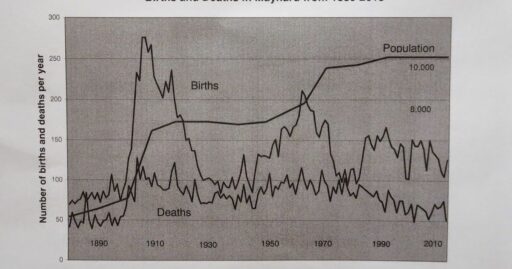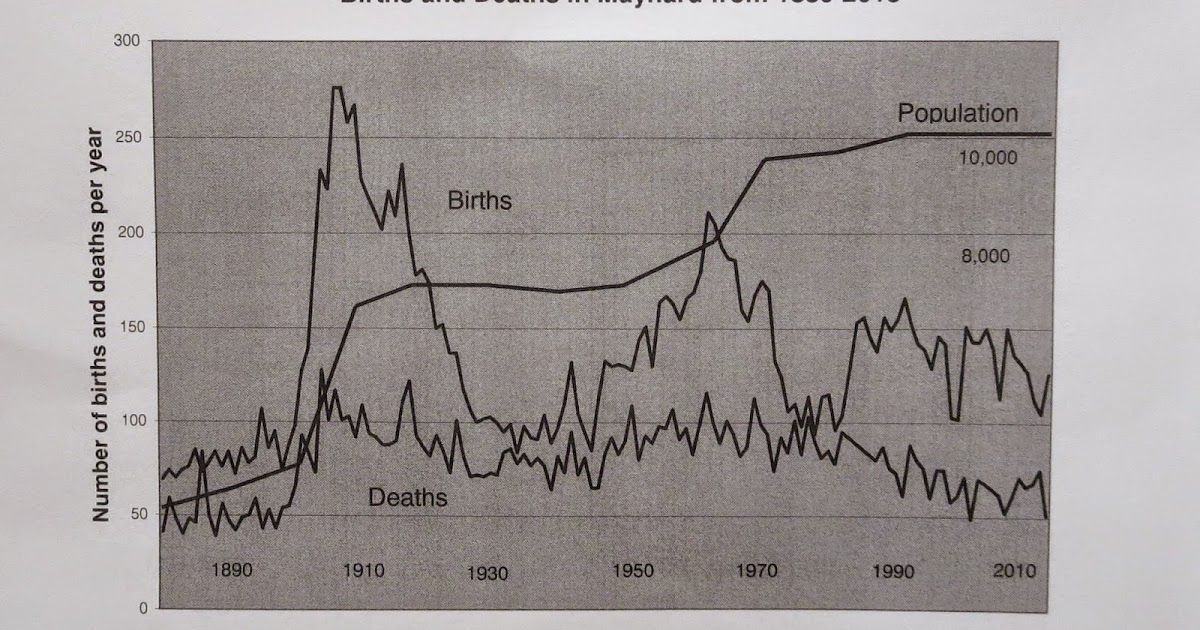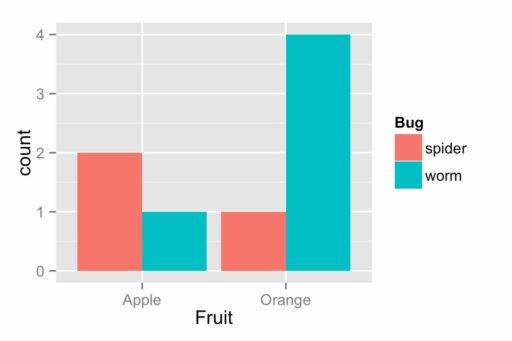Table of Contents
Time series data analysis is a powerful tool that enables us to decipher complex patterns and predict future trends by examining data points collected over time. It is crucial for making informed decisions in various domains, from finance and meteorology to health and business analytics. By understanding the key components of time series data, identifying seasonal effects, and employing advanced analytical techniques, we can unlock valuable insights that drive strategic decision-making and foster growth.
Key Takeaways
- Time series data analysis is essential for understanding and forecasting patterns over time, using historical data to predict future events.
- Seasonal components play a significant role in time series data, revealing cyclical patterns that can be leveraged for strategic advantages.
- Trend analysis within time series data is key for businesses, as it can inform long-term planning and prompt timely responses to market changes.
- Advanced techniques like ARIMA models and machine learning algorithms can enhance the accuracy of time series forecasts and uncover deeper insights.
- Integrating artificial intelligence with time series analysis, such as using Dynamic Time Warping, can push the boundaries of predictive analytics.
Key Components of Time Series Data Analysis

Decoding Trends and Seasonality
Understanding the rhythmic patterns in time series data is crucial for accurate analysis. Decoding trends and seasonality involves distinguishing between regular movements in the data and those that signify a more profound change. Trends indicate long-term directions, while seasonality refers to periodic fluctuations that repeat over a known cycle.
- Trends: Long-term movement in one direction (upward or downward)
- Seasonality: Regular fluctuations that occur at specific intervals (daily, weekly, yearly)
By isolating these components, analysts can better understand the underlying forces shaping the data and make more informed predictions.
Filtering out the noise and identifying true seasonal effects requires careful examination. For instance, a retailer might see a spike in sales during the holiday season each year. Recognizing this pattern allows for adjustments in stock levels and marketing strategies to optimize performance during these peak periods.
Filtering Noise and Outliers
In the realm of time series analysis, noise and outliers can significantly distort the true signal of the data. Noise is the unpredictable element that introduces irregularities, while outliers are extreme values that deviate from other observations. Effective filtering of these components is crucial for a clear analysis.
To address noise, various decomposition methods can be applied to separate the data into its underlying components: trend, seasonality, and the residual noise. This process helps in identifying the true patterns hidden beneath the random fluctuations.
Outliers, on the other hand, may represent anomalies that could be critical for certain analyses, such as fraud detection or quality control. However, they can also be the result of errors or rare events that skew the overall picture. Techniques to detect and handle outliers include:
- Statistical thresholding
- Z-score analysis
- Robust statistical methods
By meticulously filtering out noise and outliers, we lay the groundwork for more accurate forecasting and a deeper understanding of the data’s intrinsic characteristics.
It’s important to remember that while some outliers may be errors, others could hold valuable insights. Therefore, the goal is not to simply remove them, but to understand their nature and impact on the analysis.
Forecasting Future Patterns
Forecasting future patterns in time series data is akin to navigating a ship through the foggy sea of uncertainty. The ability to predict what lies ahead is invaluable for strategic planning and decision-making. By analyzing past data, we can extrapolate and make educated guesses about future events, though it’s important to remember that the precision of these forecasts can be affected by the ever-changing environment.
Forecasting is not just about algorithms and models; it’s a blend of science and art. It requires a deep understanding of the data, the context, and the factors that could influence future outcomes.
Here are some key steps in forecasting future patterns:
- Understanding the historical context: Recognizing the significance of past events and how they shape future trends.
- Decomposing the data: Separating the signal from the noise to focus on meaningful patterns.
- Choosing the right model: Selecting a forecasting model that best fits the data and the business context.
- Refining the forecast: Continuously adjusting the model as new data becomes available to improve accuracy.
While the past can be a guide, it’s not always a perfect predictor, especially during times of rapid change. The true skill lies in the ability to adapt and refine forecasts as new information emerges, ensuring that businesses remain agile and informed.
The Seasonal Component in Time Series

Identifying Cyclical Patterns
In the realm of time series data, identifying cyclical patterns is akin to decoding the natural rhythms found in various phenomena. These patterns are not just random occurrences; they are the predictable pulses that can be observed in data over regular intervals. For instance, retail businesses often see a cyclical pattern with increased sales during the holiday season each year.
Recognizing these cyclical patterns is crucial for accurate forecasting. By understanding the timing and magnitude of these cycles, businesses can adjust their strategies accordingly. Here’s a simple breakdown of the steps involved in identifying these patterns:
- Step 1: Collect and plot the time series data.
- Step 2: Apply decomposition methods to separate the time series into trend, seasonal, and residual components.
- Step 3: Analyze the seasonal component to determine the presence and characteristics of cyclical patterns.
- Step 4: Use this information to adjust forecasts and business strategies.
Cyclical features encoding is not just a technical exercise; it’s about understanding the essence of time within your data. By transforming features such as time, weeks, months, or seasons, we preserve their cyclical significance, enabling more nuanced analyses and predictions.
Adjusting for Seasonal Variations
Once seasonal patterns are identified, the next step is to adjust the raw data to account for these variations. Adjusting for seasonal variations is crucial for obtaining a clearer view of the underlying trends and for making more accurate predictions. This process, known as seasonal adjustment, involves calculating and removing the effects of seasonality to reveal the non-seasonal components of the data.
- Determine the seasonal index for each period.
- Calculate the seasonal effect by averaging the data for each period across all cycles.
- Adjust the original data by removing the seasonal effect.
Seasonal adjustment allows analysts to compare data across different time periods without the distortions that seasonal effects can introduce. It is particularly important in fields where seasonality is a strong component, such as retail, tourism, and agriculture.
By smoothing out these cyclical fluctuations, businesses can better understand the true performance and trends, leading to more informed strategic decisions. For instance, a retailer might use adjusted data to discern whether a change in sales is due to an actual increase in demand or simply a seasonal peak.
Capitalizing on Seasonal Opportunities
Capitalizing on seasonal opportunities involves leveraging the predictable patterns identified in time series data to optimize business strategies. Businesses can adjust their inventory, marketing, and staffing to align with anticipated seasonal demands, ensuring they are well-prepared to meet customer needs and maximize profits.
For instance, a retailer might use historical sales data to anticipate increased demand for certain products during the holiday season:
| Month | Expected Increase in Sales |
|---|---|
| October | 10% |
| November | 25% |
| December | 50% |
By strategically planning for these seasonal spikes, companies can ensure they have the right stock levels to avoid both overstocking and stockouts, which can lead to lost sales or excess inventory costs.
Additionally, businesses can explore new seasonal niches or time-limited offers to attract customers and boost sales during peak periods. This proactive approach not only enhances customer satisfaction but also strengthens the company’s competitive edge.
Trend Analysis and Its Business Implications

Spotting Upward and Downward Trends
In the realm of time series data, spotting upward and downward trends is crucial for understanding the direction in which a dataset is moving. An upward trend indicates a consistent increase over time, akin to a plant growing taller with each passing day. Conversely, a downward trend suggests a decline, signaling potential issues or a waning interest that may require strategic adjustments.
To accurately identify these trends, analysts must differentiate genuine trends from random fluctuations, which involves decomposing the time series data. This process helps to filter out the noise—unpredictable elements that add irregularities to the data.
Trend analysis is not just about recognizing patterns; it’s about making informed decisions based on those patterns.
Here are some key steps in trend analysis:
- Decompose the time series to separate trends, seasonality, and noise.
- Analyze the decomposed components to understand their individual contributions.
- Correlate external variables such as socioeconomic conditions or weather patterns to contextualize the trends.
- Validate the trends by comparing them with leading indicators, like Google Trends data, to ensure they are not anomalies.
Strategic Decision Making Based on Trends
In the realm of business analytics, strategic decision making is greatly enhanced by a thorough understanding of time series trends. By examining past performance and identifying patterns, businesses can make informed predictions about future outcomes. This proactive approach allows for the optimization of resources and the anticipation of market shifts.
For instance, consider the impact of trend analysis on inventory management. A business that recognizes a consistent upward trend in sales for a particular product can adjust its inventory levels accordingly to meet demand and avoid stockouts. Conversely, a downward trend might signal the need to reduce inventory to prevent overstocking.
- Select multiple internal and external variables to better understand the motivations behind trends.
- Utilize tools like Google Trends to gauge public interest and predict market movements.
The primary objective in analyzing time series is foreseeing potential future values by revealing inherent structures like cycles or trends within the dataset.
By integrating these insights into strategic planning, businesses can align their operations with the anticipated trajectory of their market, ensuring that they are well-positioned to capitalize on opportunities and mitigate risks.
Long-Term Planning and Trend Adjustments
In the realm of business, long-term planning is essential for sustainability and growth. Adjusting strategies based on trend analysis is a critical component of this planning process. By understanding the direction and momentum of market trends, businesses can align their objectives with the likely future state of their industry.
- Recognize the importance of revenue forecasting and its impact on long-term business strategies.
- Assess the need for expense budgeting and resource allocation in response to trend predictions.
- Evaluate the potential for exit planning as a strategic response to long-term trends.
The ability to adapt to changing trends is not just about survival; it’s about positioning for success in an evolving market landscape.
Associative forecasting, which combines internal and external variables, offers a nuanced approach to trend adjustments. This method allows for a more comprehensive analysis, taking into account factors such as promotions, channel mix spend, and even shelf space allocation. By integrating these variables, businesses can create robust models that cater to the dynamic nature of the market.
Advanced Time Series Analysis Techniques

Moving Averages and Exponential Smoothing
Moving averages and exponential smoothing are foundational techniques in time series analysis, providing a way to smooth out the data to identify the underlying trend. Moving averages help to visualize and understand trends over time by averaging data points within a specified window. This technique is particularly useful for identifying long-term directional movements in the data.
Exponential smoothing, on the other hand, assigns exponentially decreasing weights to past observations. This method is favored for its simplicity and flexibility, allowing analysts to give more importance to recent observations while not completely discarding the historical data.
Both techniques are essential for reducing noise and making the data more interpretable for further analysis or forecasting.
While these methods are powerful on their own, they are often used as components of more complex models, such as ARIMA, which integrate these smoothing techniques to enhance forecast accuracy.
ARIMA Models and Their Applications
The Autoregressive Integrated Moving Average (ARIMA) model is a cornerstone of classical time series analysis. It excels in breaking down time series data into understandable components, such as trend and seasonality, making it a go-to method for many in the field of data analytics. ARIMA models are particularly adept at handling data with clear patterns, such as stock market fluctuations or seasonal temperature changes.
Despite its widespread use, ARIMA is not without its challenges. Complex or nuanced datasets can sometimes stump this traditional method, making it difficult to discern the underlying patterns. This is where the integration of machine learning techniques can offer a significant advantage, enhancing the model’s ability to deal with intricate data structures.
ARIMA’s adaptability and ease of use make it an essential tool for anyone looking to get started with time series forecasting. However, it’s important to recognize its limitations and consider supplementing it with more advanced methods when necessary.
For those interested in practical applications, exploring the auto-arima package can be a valuable exercise. This tool automates some of the processes involved in ARIMA modeling, potentially improving the accuracy of forecasts. It’s an example of how machine learning is being used to refine and extend the capabilities of classical forecasting techniques.
Multivariate Models and Stationarity
Multivariate time series models are akin to a Swiss Army knife in the realm of forecasting, adept at handling a multitude of variables simultaneously. These models enhance forecast accuracy by considering the interplay between various factors, reflecting the complex reality where business outcomes are rarely influenced by a single variable alone.
Stationarity is another cornerstone of robust time series analysis. Achieving stationarity means ensuring that the statistical properties of the series do not depend on the time at which the series is observed. This transformation is vital for the validity of many statistical models and for uncovering hidden patterns in the data.
Differencing is a key technique in achieving stationarity, effectively ‘detrending’ the data to reveal the underlying stationary process.
The table below summarizes the benefits of integrating multivariate models and stationarity in time series analysis:
| Aspect | Benefit |
|---|---|
| Forecasting Accuracy | Improved by considering multiple interacting variables |
| Pattern Detection | Enhanced through the use of autocorrelation and stationarity |
| Model Validity | Ensured by transforming data to a stationary state |
By embracing these advanced techniques, analysts and business leaders can unlock deeper insights and drive more informed strategic decisions.
Integrating Machine Learning for Enhanced Forecasts

Dynamic Time Warping (DTW) and AI
Dynamic Time Warping (DTW) has emerged as a pivotal technique in the analysis of time series data, particularly when dealing with sequences that vary in speed and timing. Its integration with AI has the potential to transform the landscape of data analytics, offering more nuanced insights and predictions. DTW’s flexibility allows it to be applied across diverse fields, from speech recognition to financial trend analysis.
The table below showcases some of the key applications of DTW in various industries:
| Industry | Application | Benefit |
|---|---|---|
| Voice Recognition | Matching spoken words | Accommodates speed variations |
| Finance | Analyzing stock market trends | Compares historical data |
| Health Care | Monitoring patient activities | Detects deviations from normal patterns |
The synergy between DTW and AI not only enhances the accuracy of time series analysis but also paves the way for innovative solutions in data interpretation. This combination is particularly valuable in areas where timing and speed variations are crucial, such as gesture recognition or the analysis of irregular heartbeats.
As we continue to harness the power of DTW and AI, it becomes clear that the journey is not solely about the technology itself but about the stories and patterns that are revealed through its application. Machine learning and AI enhance data science by simplifying data understanding. Domain-specific knowledge and user experience are crucial for effective analytics tools in business transformation.
Improving Accuracy with Machine Learning
The integration of machine learning into time series forecasting has revolutionized the field, offering a dynamic approach to making predictions. Machine learning models excel by continuously refining forecasts with each new data point, leading to a significant improvement in accuracy over traditional methods.
Machine learning’s ability to process and learn from large datasets is particularly advantageous for time-sensitive scenarios. For instance, in stock market forecasting, where conditions fluctuate rapidly, machine learning algorithms can adapt to new information, enhancing the precision of predictions.
The enhancement in forecasting accuracy stems from the model’s capacity to incorporate a multitude of external factors, which traditional models may overlook.
Moreover, the use of techniques like Dynamic Time Warping (DTW) in machine learning enables better feature extraction from time series data, aiding in more accurate clustering, classification, and forecasting. As a result, forecasts become more reliable, especially over shorter time horizons where data quality is paramount.
Case Studies: AI-Driven Time Series Successes
The integration of Artificial Intelligence (AI) in time series analysis has revolutionized the way we interpret and forecast data. AI-driven models have demonstrated remarkable success in various industries, from finance to healthcare, by enhancing predictive accuracy and uncovering complex patterns.
The synergy between Dynamic Time Warping (DTW) and AI has been particularly impactful. DTW’s ability to compare time-varying sequences has been augmented by AI’s pattern recognition capabilities, leading to more nuanced analyses and predictions.
Here are a few notable case studies that showcase the success of AI in time series analysis:
- A financial institution used machine learning to predict stock market trends, resulting in a 20% increase in investment returns.
- Healthcare providers implemented AI to analyze patient data, improving diagnosis accuracy by 30%.
- Retail companies leveraged AI to optimize inventory levels based on seasonal demand, reducing waste by 15%.
These examples highlight the transformative potential of AI in extracting valuable insights from time series data. As we continue to explore and refine these technologies, the possibilities for innovation and efficiency seem limitless.
Conclusion: Harnessing the Power of Time Series Analysis
Throughout this article, we’ve explored the intricate world of time series data, uncovering the significance of trends, seasonality, and patterns that shape our understanding of temporal datasets. From the basics of time series data to the advanced techniques like Dynamic Time Warping and the integration of AI, we’ve seen how these methods can transform raw data into actionable insights. Whether it’s forecasting stock market trends, predicting weather patterns, or optimizing business strategies, time series analysis is an invaluable tool that enables us to predict the future by learning from the past. As we continue to advance in our analytical capabilities, the stories hidden within our data become ever more accessible, allowing us to make more informed decisions and unlock the full potential of time series data.
Frequently Asked Questions
What are the key components of time series data analysis?
The key components include decoding trends, identifying seasonality, filtering noise, and predicting future patterns. These elements help in understanding the underlying story in the data that changes over time.
Why is the chronological order of time series data important?
Chronological order is fundamental to the analysis and forecasting of time series data. It allows for the understanding of temporal patterns and the prediction of future events based on past data.
How can identifying an upward trend in time series data benefit businesses?
Spotting an upward trend early can allow businesses to capitalize on market demand or identify investment opportunities before they become widely recognized, potentially leading to competitive advantages.
What are some common time series analysis methods?
Common methods include moving averages, exponential smoothing, ARIMA models, and multivariate models. These techniques are used to forecast and analyze trends in various fields such as finance, meteorology, and economics.
How does integrating machine learning enhance time series forecasts?
Machine learning, including techniques like Dynamic Time Warping (DTW), can improve the accuracy of forecasts by uncovering complex patterns in the data and adapting to new information more dynamically than traditional methods.
What is the significance of stationarity in time series analysis?
Stationarity refers to the property of a time series having a consistent mean and variance over time. Achieving stationarity is important because many forecasting models assume that the series is stationary, making the data more amenable to analysis.





